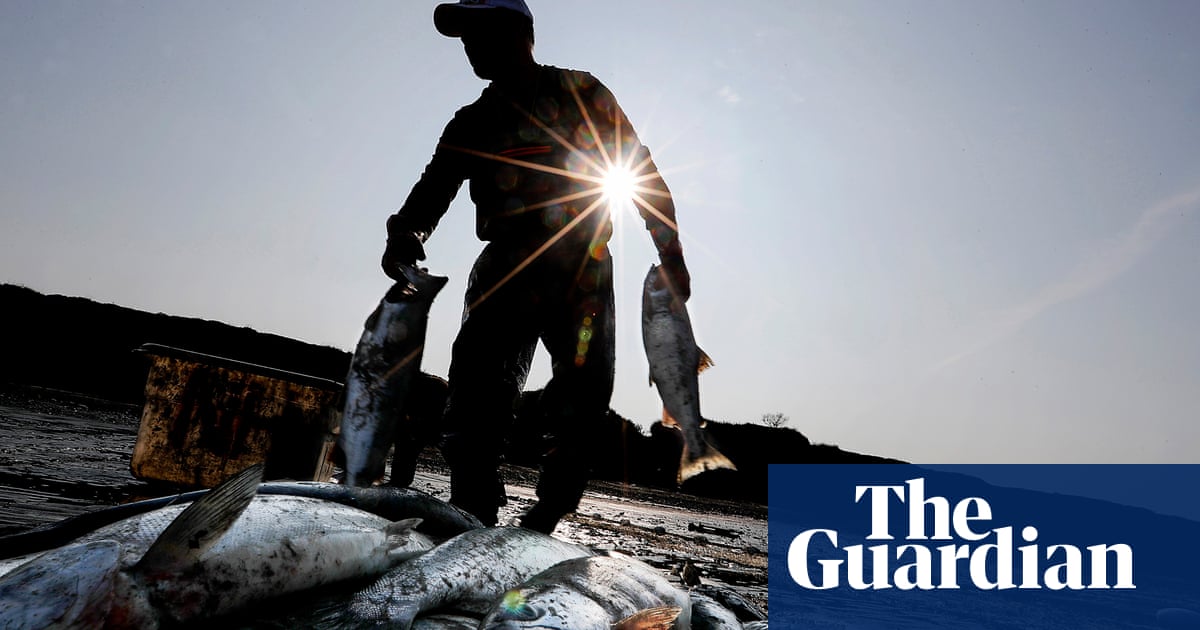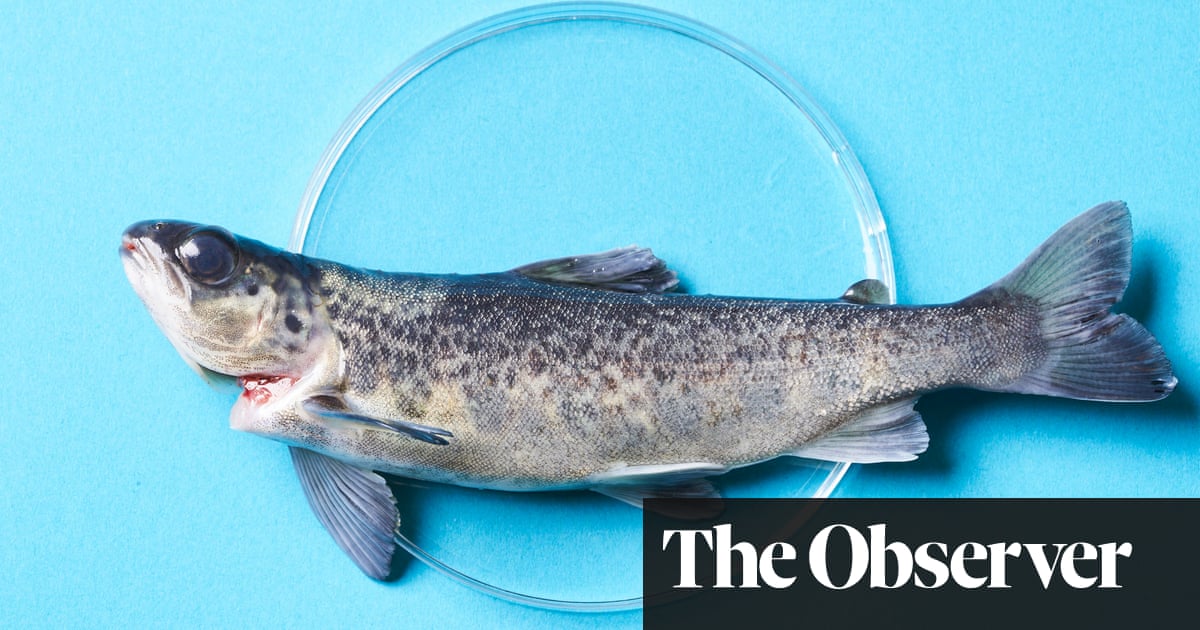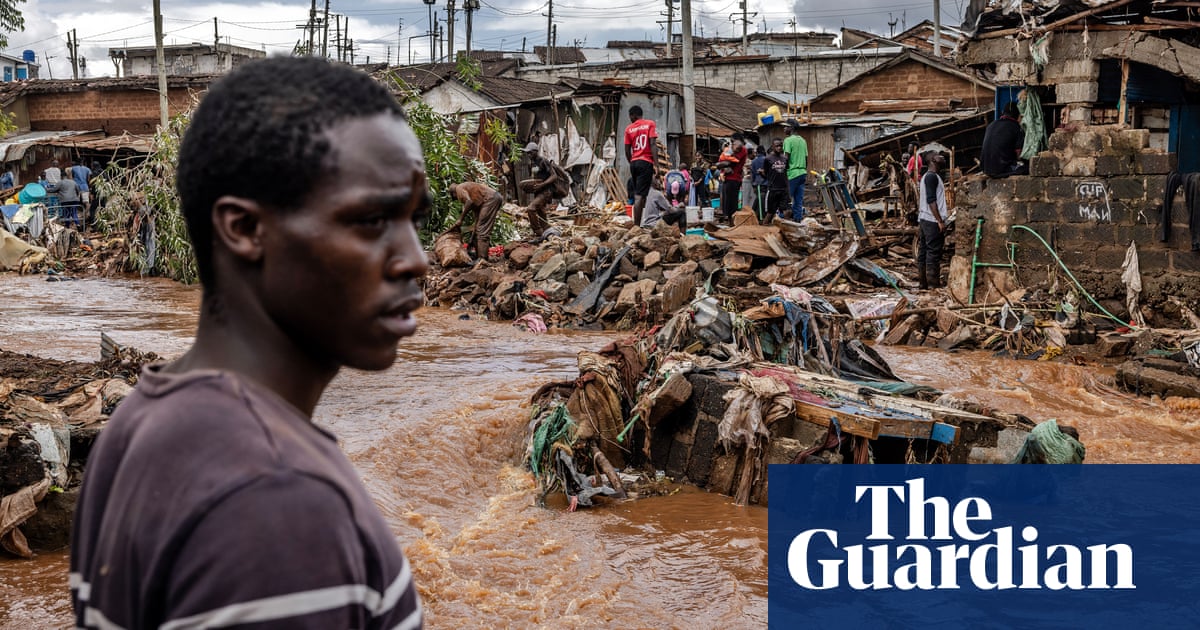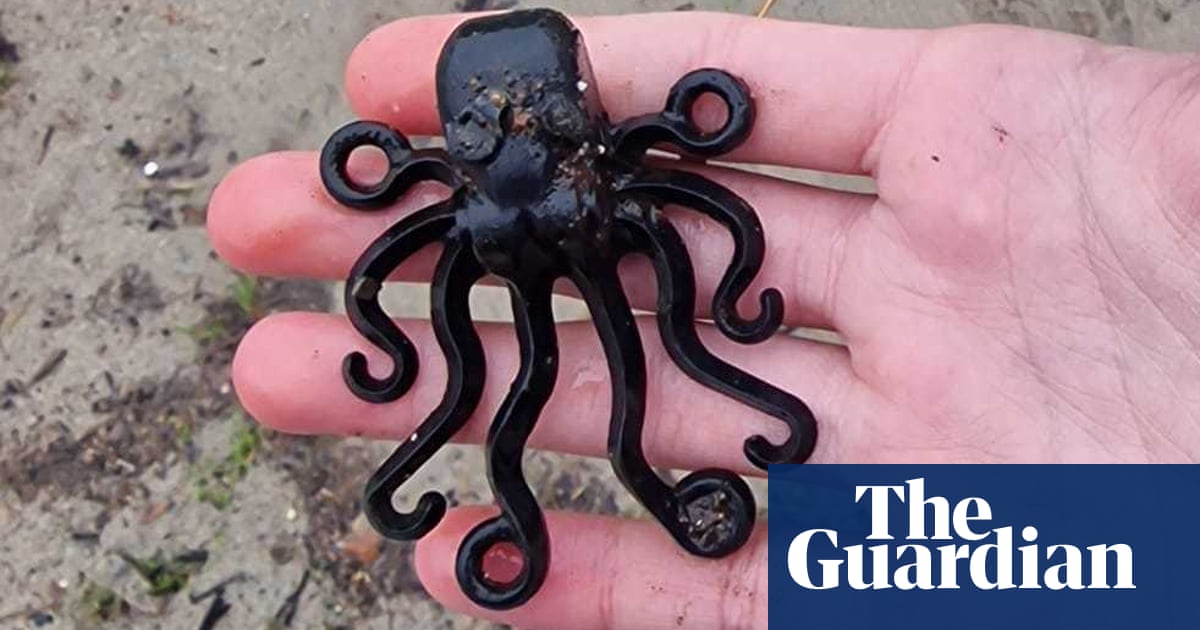‘I’ll run until there’s no sea left’: the gas-mask wearing ultramarathoner circling the Salton Sea | Environment
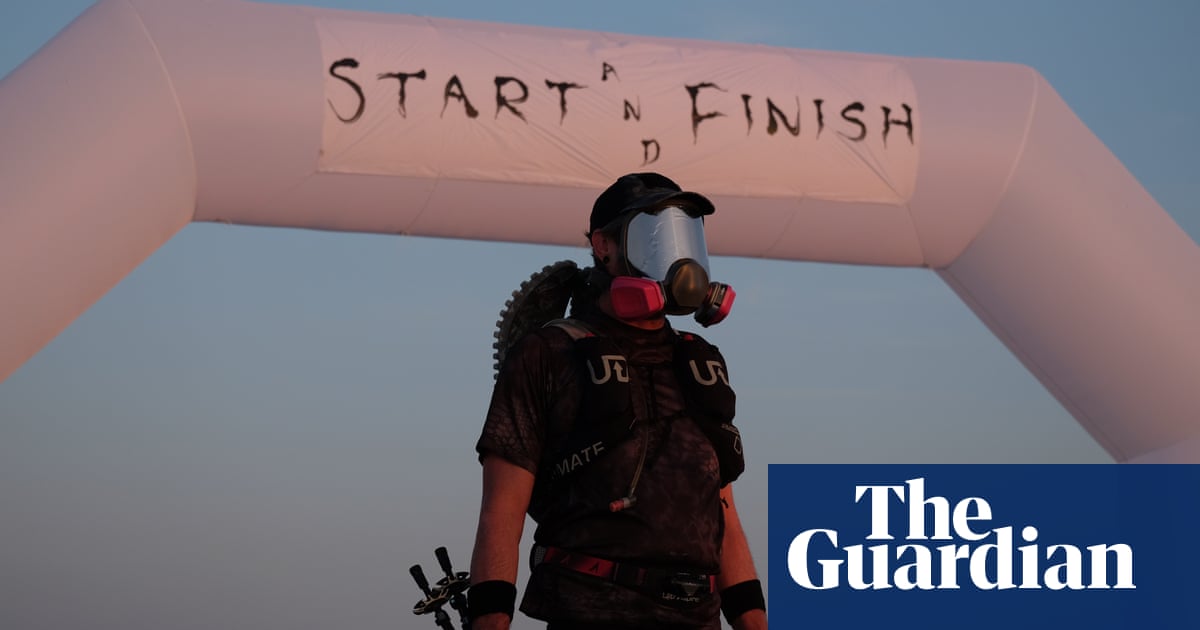

On an otherwise desolate horizon, a black dot materialized along the dramatic shoreline of California’s Salton Sea one recent Saturday afternoon. Beachgoers shielded their eyes against the midday glare and watched as the mirage became 49-year-old William Sinclair, an ultramarathon runner and activist who goes by the self-given nickname “Irondad”.
The runner’s sudden appearance felt apocalyptic: he wore an ominous full-face gas mask to block out dust, and a pair of snowshoes strapped wing-like to his back, to traverse the area’s expansive mudflats. He dressed all in black, with the exception of neon orange sneakers that were already caked in dirt from running and hiking the past 16 miles, a remote stretch of both cracked and swampy earth that very rarely sees any other human activity.
His girlfriend, Larissa Olenicoff, ran up to greet him, wielding a bag of snacks, water and sunscreen. “I don’t know what you need, but I have everything,” she promised.
“I don’t know either, but I’m tapped,” he said, briefly stripping off his bulky mask.
But after the short break, he still had roughly 76 more miles (or the equivalent of nearly three full marathons) and 38 hours to go: a grueling route spanning the entire circumference of the Salton Sea, which would also require a night of no sleep and the possibility of minor hallucinations from extreme fatigue. Irondad, who requested that he be referred to by his runner name, hopes that his unusual annual pilgrimage will rally people around the plight of the dwindling Salton Sea, an issue that has long been called an “environmental and public health crisis”.
The runner-turned-activist’s effort may be the most unique advocacy attempt to save the sea yet, but it’s certainly not the first.
The Golden state’s largest lake has been steadily receding for decades, exposing more and more of an underlying lakebed laced with arsenic, lead and pesticides from nearby agricultural runoff. As the mud dries, toxic dust rises into the air, leading to high rates of respiratory issues in surrounding communities, such as severe asthma and allergies. Over the years, hundreds of millions of dollars have been allocated towards cleanup and restoration work, to varying effect. Some past environmental projects are still littered around the sea’s edge, like seemingly endless rows of hay bales intended to suppress the dust, which stood symbolically on the dried lakebed next to the starting line of Irondad’s run.
But for those who don’t live near the arid shoreline and choking dust of the Salton Sea, the scale of the problem can be easily forgotten – if they’re aware of it in the first place.
“It’s absolutely shocking to me how many Californians have never heard of the Salton Sea,” Irondad said. “Much less have any idea about the ecological crisis that the locals here are facing.”
By the end of this decade, the Salton Sea could lose more than half of its volume, some researchers have predicted. Irondad’s goal is to run around the sea’s entire perimeter annually and to capture specific data about the sea’s decline, including GPS coordinates in regular intervals to measure its approximate size, year over year.
“The plan,” he said, “is to run until there’s no sea left to run around.”
Living among environmental ruin
Ten hours after his first water break, Irondad plodded down the western side of the sea, passing ghostly clumps of dead trees, previously hidden under the water and now re-emerging as the water recedes. There was very little moonlight and the temperature had dropped by 20F overnight. The sea was still.
“It’s a little eerie, to be honest,” he said over the phone, the sound of his footsteps on the salt-encrusted beach audible in the background. “And there’s something about that I really like.”
The first time the activist laid eyes on the Salton Sea a few years ago, he didn’t know anything about it. He was struck by the giant desert lake’s sheer, otherworldly beauty – and the sense of abandonment. There wasn’t a single boat in the distance, nor any swimmers in the water.
He quickly realized that “something terrible had happened here”. Irondad, like other activists who have taken on long runs to raise awareness about global water issues, decided that a physical feat of endurance might grab people’s attention. In the past, he’s run several Ironman triathlons and different ultramarathons around the world. Last year, he ran around the Salton Sea continuously for the first time.
Irondad, whose day job is in software engineering in the Bay Area, now spends half the year in Bombay Beach, one of the tiny, tight-knit communities that sits on the periphery of the Salton Sea.
And to live in Bombay Beach is to live among environmental ruin – and to create art from it. On the exposed lakebed (often called “the playa”) where Irondad started and finished his run, dozens of large-scale art installations made from found materials dot the landscape. One wooden sign, topped by a metal pelican, reads: “Bring us back!” Not far away, a giant fish made from rusted sheet metal and driftwood crests a wave of sand, its mouth agape. At the sea’s edge, big punched-out letters simply say “SOS”.
In recent years, the town’s unique blend of renegade public art and environmental justice advocacy has drawn visitors from around the world, particularly through an annual arts festival called the Bombay Beach Biennale that takes place every spring – the exact dates of which are now only spread via word of mouth.
“We have always had an ecological focus here, almost by necessity. With contextualized art, we’re actually saying things in a much more articulate way, because that is the unique voice the Bombay Beach has,” Irondad said. “This run itself is also intended to be a work of art and activism.”
The runner plans to share data from this year’s journey around the sea at an upcoming Bombay Beach Environmental Day, where other activists, residents and members of environmental groups will gather to discuss the future of the region. Already, Irondad has found some interesting differences between his run this year and last, including changes in the shoreline and vegetation, and a four-mile reduction in the run’s total length – a sign of the shrinking lake, he said.
But in a place like the Salton Sea, there are always unforeseen challenges.
As Irondad neared the end of his 92-mile trip, the mud along the shore – typically a “pudding”-like consistency – got about thigh-deep. At another point, he was forced to swim across a narrow river and worried that he might be swept out into the wider sea. Eventually, his phone died and the battery of his headlamp waned. After a few hours of radio silence, Olenicoff, his girlfriend, and a friend had to track him down themselves. They eventually found him slowly trekking forward in the pitch dark.
At 1.53am on Monday, nearly two full days after he first set out, Irondad finally crossed his makeshift finish line in Bombay Beach.
“How do you feel?” Olenicoff asked him as he lightly staggered away from the route, his black clothes turned to light gray by a thick layer of mud.
“I feel happy that this is over,” he said, smiling.
Source link

